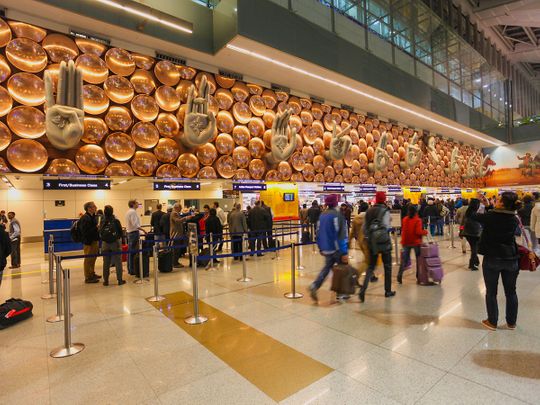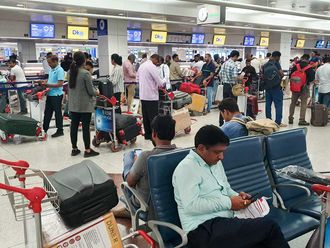
Dubai: Expat Indians in the UAE thinking of traveling back to the home country this summer should start making those bookings now, with tickets expected to cost 10-25 per cent more than even 2019 levels.
Airlines are charging Dh300-Dh400 one-way for flights from Dubai to Mumbai, but fares are seen surging to more than Dh1,000 in July. A flight connecting the South Indian city of Kochi from Dubai costs about Dh900 now, but will be Dh2,000 and above starting in July. A Dubai to Delhi journey, which currently costs around Dh300, will be at least Dh1,000 in July.
The same story is repeated on flights from India to the UAE, with ticket rates already quite high. A Mumbai-Dubai one-way trip will almost quadruple to Dh2,600. Flying from Kochi to Dubai, which currently costs Dh1,000, will require passengers to shell out Dh500 or more. Those planning to travel Delhi to Dubai will be relieved to know that rates for mid-June are only up from Dh1,200 compared with Dh500-Dh1,000 now.
A surge in fuel prices due to the Russia-Ukraine conflict coupled with not enough capacity to meet demand on the UAE-India have led to airfares already firming up quite a bit in recent weeks. Although airlines have announced plans to ramp up capacity on the route - among the world's busiest - it might be a while before seats available go back to pre-pandemic levels.
"The prices are definitely high because of the crisis, but then the demand has not dropped at all," said Suraj Ramesh from Al Badie Travel agency. "Fares have increased probably because this is the high season anyway, and looking at the summer, there is enough and more demand."
Clearly, passengers checking out airlines’ summer schedules to India seem unperturbed. “The rise in airfares has not caused a decrease in travel plans,” said Nishant Pitti, CEO of EaseMyTrip, the online travel platform. “After two years of the pandemic and various travel restrictions, people are now more eager than ever to visit places that they were unable to go to. Travel sentiment continues to be positive.”
Once all restrictions were lifted earlier this year, including India allowing back international flights in full, traffic shot up instantly. Airlines have ramped up capacity, with Dubai-Mumbai already among the busiest in the world in terms of airline seats, according to the latest report from aviation consultancy OAG.
Summer demand
Traditionally, passengers flying between UAE and India have been sensitive to changes in fares. According to Sudheesh T. P., General Manager at Deira Travel & Tourist Agency, “The seat supply has not increased proportionately to the demand – so, airlines have an upper hand when it comes to rates.”
Earlier, passengers could beat seasonally high fares by booking months in advance, but that seems to be changing now. “Normally, passengers would get an ‘early bird’ price, but during peak periods airlines reduce the inventory (seats) available in Economy – this is an indirect way of increasing the fares,” said Sudheesh.
Leisure travel is strong
Tourists also represent a big part of the traffic. After the conclusion of the six-month Expo, Indian travelers are now gearing up to attend other events in UAE. “We have been seeing an upward climb as UAE has become one of the prime spots for those who want to visit a family-friendly place,” said Pitti. “With the upcoming IIFA Awards, there are many reasons for travellers to choose UAE for travel.”










